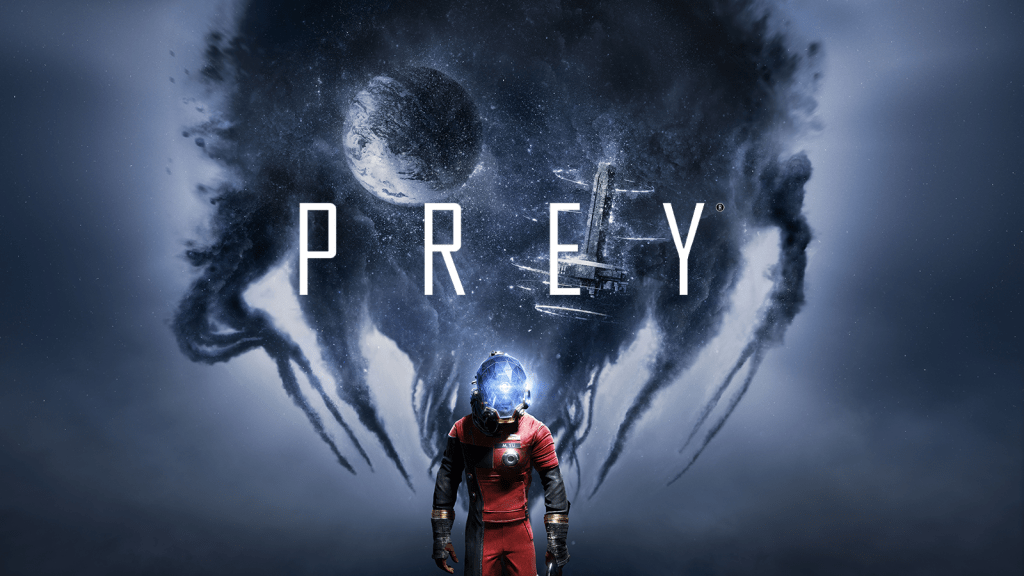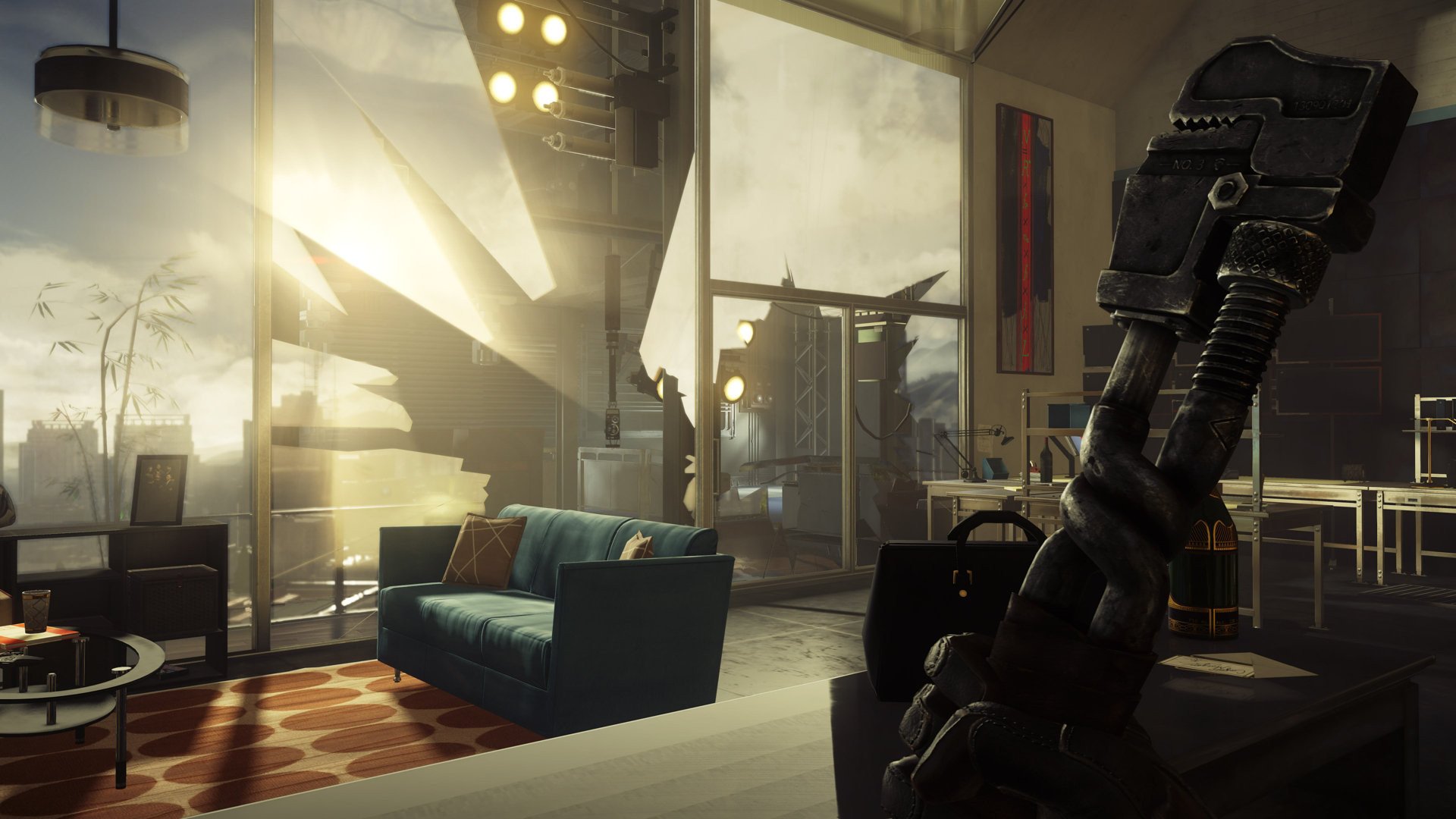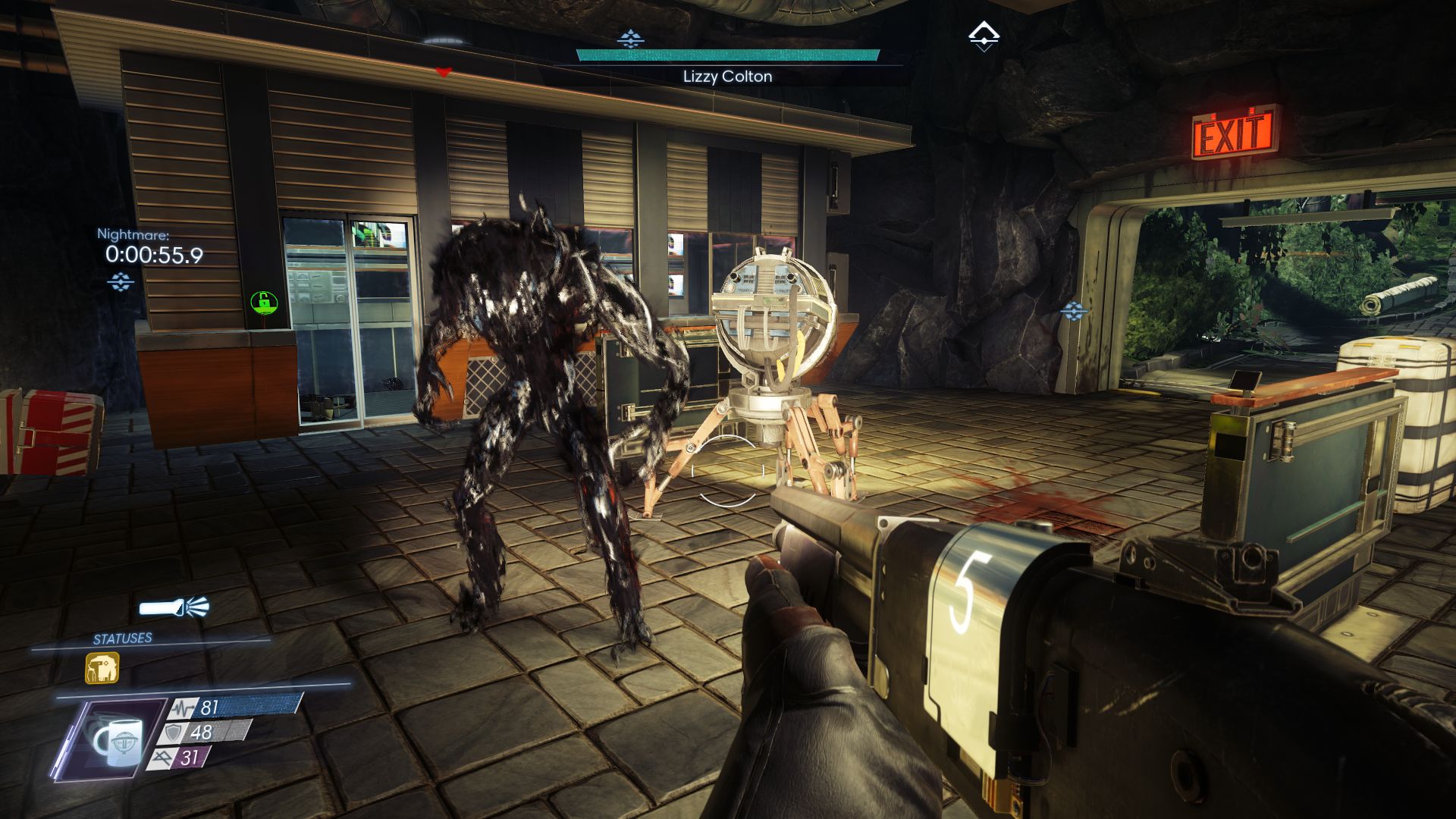
For gamers of a certain age, the names Shodan and Xerxes are likely to trigger the urge to smash the nearest computer with a wrench.
Long before Amazon’s Alexa was around to remind us to buy toilet roll, the megalomaniacal Artificial Intelligence of System Shock and its sequel ran amok in deep space, causing sleepless nights and the occasional nervous twitch for the players who stood against them. Xerxes did not care about your bathroom essentials; Xerxes wanted to eject you from an airlock and laugh as you crystalized in space.
Not only a masterclass in sci-fi survival horror and storytelling, the System Shock games are also the spiritual predecessor to games such as Bioshock, Alien Isolation and Bethesda Softworks’ 2017 blockbuster, Prey. To say that Prey’s creation has been influenced by the System Shock series would be a massive understatement – nearly every aspect of this FPS/RPG hybrid is clearly a loving homage to its ground-breaking ancestry.
With the high expectations of such famed lineage it is perhaps understandable that Prey came under heavy fire soon after its initially positive launch. Game-breaking bugs and corrupting saves caused a huge backlash against Bethesda as it became painfully obvious why review copies of the game had been withheld prior to its release.
Eight months and several patches later, Prey is now available at discount from most gaming retailers, but does it deserve a second chance?

Gameplay
Prey puts you in the space suit of Morgan Yu, a brilliant scientist working aboard orbital space station Talos I. As you head for your ‘first’ day at work it quickly becomes apparent that things have gone badly wrong and that a group of alien organisms called the Typhon have killed nearly everyone on board. Over the next 15-30 hours of gameplay it is your job to decide how to survive long enough to clean up the mess.
One of the many things that Prey does very, very well is the element of choice. Morgan has the capacity to learn and develop new abilities through the introduction of Neuromods that implant new skills directly to the brain, ala The Matrix. This in turn allows players to decide Morgan’s strengths and enables a diverse skillset that promotes hacking, psionics and sneaking as viable alternatives to shooting everything in sight. Fairly late in the game I was dismayed when my progress was hampered by a door that I wasn’t strong enough to open, only to realise that I could blast my way through with jury-rigged explosives.
Player decisions also influence Prey’s emergent narrative style which builds atmosphere and depth as it unfolds across the campaign. Do you waste precious time and ammo backtracking to that distant bulkhead to get those meds for that sickly analyst, or do you push on and let her die an avoidable death? This element of consequence has genuine impact on how the game evolves and ultimately which of several endings you’ll encounter. Thankfully, whichever way you choose to play, quests come along thick and fast and add plenty of variety and scope for exploring every corner of the sprawling research station.
Sub-quests and exploration of Talos I’s vast layout reward Morgan with extra ammo, supplies and blueprints that can be crafted via onboard 3D printer-esque fabricators. Computer terminals can be accessed via password or hacked via a mini game to provide access to emails and files that give codes to storage lockers and area maps. It’s genuinely satisfying to gain access to a previously locked door that was guarding a much needed medikit or ammo for Prey’s fully upgradable weapons.
Unfortunately, the quest and exploration systems remain frustrating even after several patches. The freedom to traverse the hallways of Talos I becomes a double-edged sword when quests have you traipsing across several previously explored areas to locate a vital keycard or objective. This monotony is further compounded by a waypoint system which can’t handle the tracking of multiple quests at once. On more than one occasion the tracker led me down blind alleys or dead ends insisting that my goal was less than a meter away. Although this can be combatted by tracking a single quest at once it does break some of the immersion as you heave out a sigh and backtrack for the tenth time in a session.

On the whole, hostile encounters with the Typhon are on the ride side of challenging with the opportunity to scan aliens for weaknesses (and later learn their abilities) a nice touch. Many battles require a bit of forward planning and strategic placement of traps and turrets can help tip the tide in your favour. That being said, there are parts of Prey where combat is nothing short of frustrating. The zero gravity areas of the map are particularly irritating as you flounder around trying to avoid damage and disorientation. Environmental hazards also become an issue if you run out of ammo for the Gloo cannon – a multifunctional weapon that can temporarily patch up arcing power outlets and flammable gas pipes. Such hazards are sometimes situated across transition points between areas of Talos I which means inevitable damage or even death if they can’t be contained or repaired.
Similarly, ammo for the game’s regular weapons becomes scarce at frighteningly regular intervals, forcing players to resort to the trusty wrench or flee to fight another day. There is genuinely nothing more sickening than dashing headlong through a crowd of Typhon, hellbent on reaching an ammo fabricator, only to find it broken as the Typhon close in. Although this can be alleviated by mixing things up by learning psionics and using the Typhon’s abilities against them, it is a factor that might frustrate players new to the genre or those with an itchy trigger finger.
Finally – BUGS: Are they still an issue? No, mostly. Thorough patching has eradicated most of the issues that were present at launch. Throughout my entire playthrough I only ran into one glitch but it was significant and it meant replaying a particularly challenging section to achieve the ending that I’d been aiming for. Thankfully, the game autosaves regularly and it meant I only lost time and patience rather than my entire progress, unlike earlier players. Prey is now in a much more polished and stable state than it was on day one.

Graphics
The visual design of Talos I is nothing short of a masterpiece. Sure, it isn’t as technically perfect as say, Horizon Zero Dawn but what it does so well is the creation of a detailed and immersive game world. Considering that Bethesda are responsible for the latter half of the Fallout series its not surprising that they’ve played to their strengths when building the setting for Prey. Overall, Talos I’s aesthetic mixes sixties retro chic with high tech sci-fi to create a deep space Marie Celeste. Every section of the station has its own feel, from the Crew Quarters filled with abandoned personal effects, to the cold, clinical Med Bay brimming with sinister looking surgical equipment. Crew and alien models are varied, realistic and well animated with Bethesda’s Doom a prevalent influence. Detail though is what truly sets this apart from games of a similar ilk. Computer terminals have password screens and email accounts, turrets smart track targets, medical droids wander the abandoned hallways and Typhon mimics morph into their surrounding at will. Prey presents a delightfully dystopian playground that deserves to be explored.
Sound
The sound and graphics of Prey are so closely twinned together that I almost combined them into one review section. Almost everything that moves has a corresponding sound effect. Aliens rumble menacingly as they stalk around the station, turbolifts swoosh you between floors and the wrench makes a satisfying sound as you smack a mimic into mush. The real triumph though is the full voice acting that accompanies the crew members of Prey’s doomed research station. Discovering voice logs that chronicle the events before and during the Typhon outbreak provides a massive amount of exposition for both story and characters, including Morgan’s role in the whole sorry affair. Personally, I found this the strongest and most involving aspect of the game. Listening to the desperate testimony of trapped crew made me want to help them and actually influenced my decision on how to conclude the campaign. Any game that can make you feel empathy for a supporting cast who are largely unencountered is clearly doing something very well and Prey is no exception.
Longevity
Prey’s campaign is a solid 15-30 hours depending on how many side-quests you choose to undertake before deciding the fate of Talos I. There’s no grinding required to ‘level up’ and neuromods are plentiful enough to allow combat and character progress to be relatively smooth. Prey has several levels of difficulty and the choice of how to develop your character means that you could potentially play the game through more than once with different play styles (for example, I deliberately didn’t take on any Typhon abilities in my playthough). Additionally, the emergent narrative means that several story branches affect which ending is achieved. Because of this Prey encourages players to undertake the campaign more than once in order to explore how things could have ended had different choices been made. I’ll definitely be reinstalling Prey in a few months to explore how gameplay varies when Morgan is loaded up with Typhon DNA.
Conclusion
Prey is an amazing game and it’s a real shame that so many gamers had such a poor early experience or chose not to play Prey at all because of caustic reviews. If you were put off at launch and have been wondering whether Prey is worth a punt on the cheap then the answer is a resounding ‘Yes!’. It isn’t perfect and the occasional bugs are a frustration but this is such a carefully crafted masterpiece that to not play it would be a crying shame. Prey gets a lovely Thumb Culture Gold Award, Xerxes would take over your console and play again.

Disclaimer: A code was received in order to write this review.

YouTube | FaceBook | Twitter | Instagram| Twitch | Discord | Podcast
